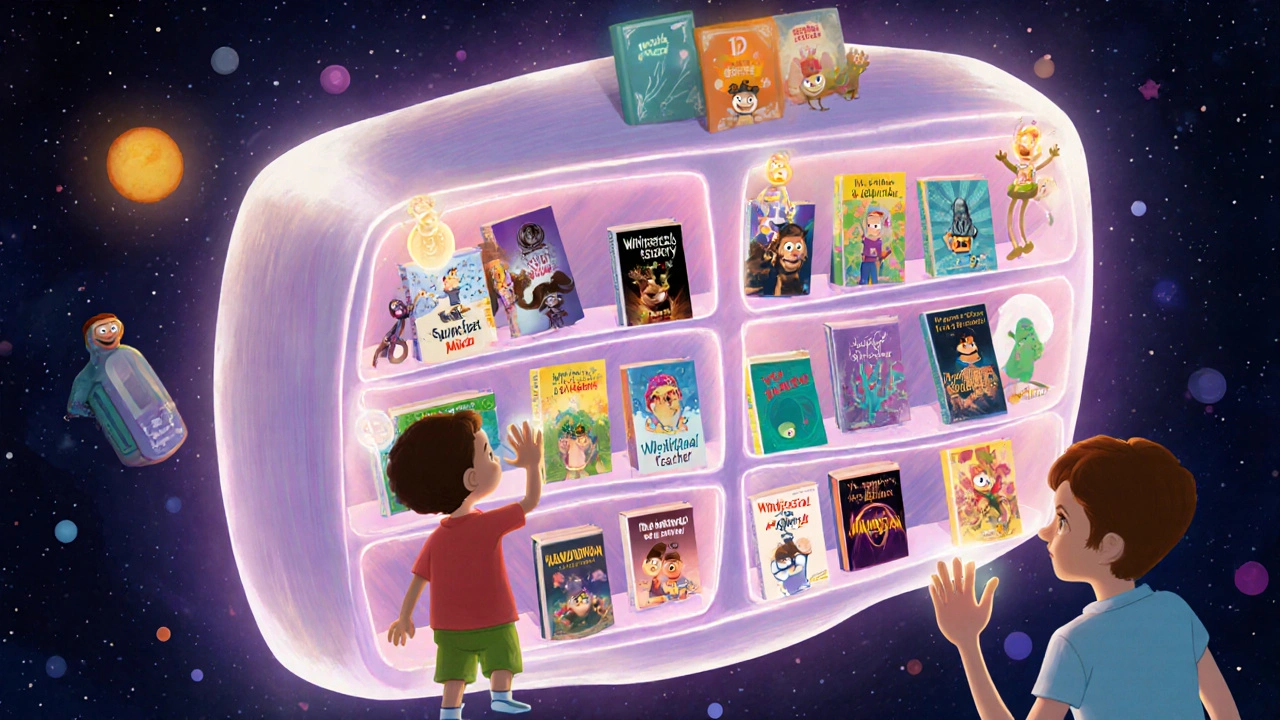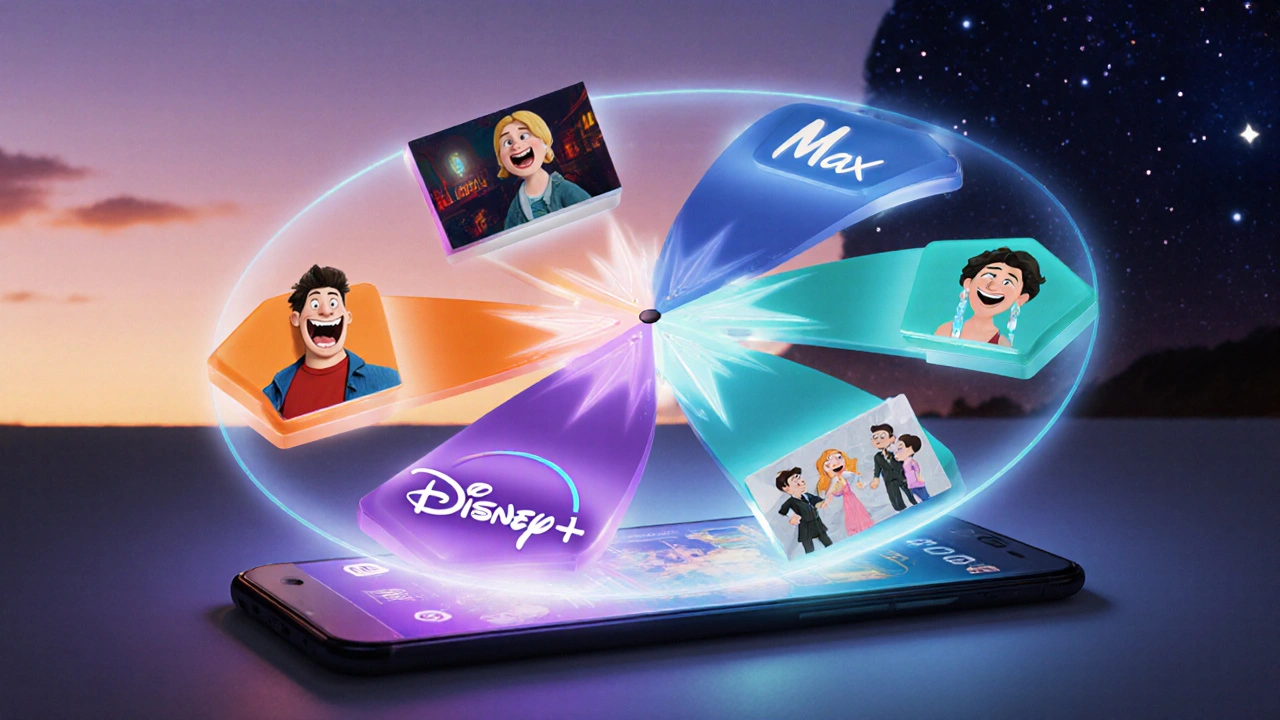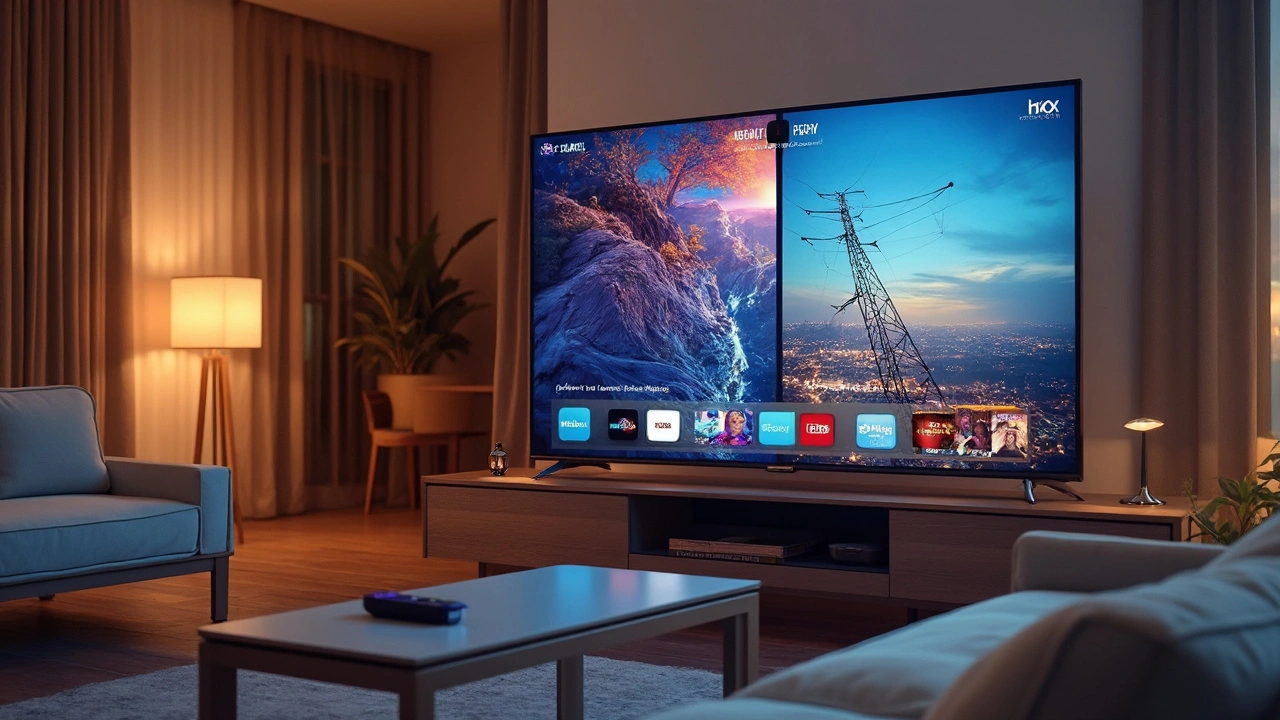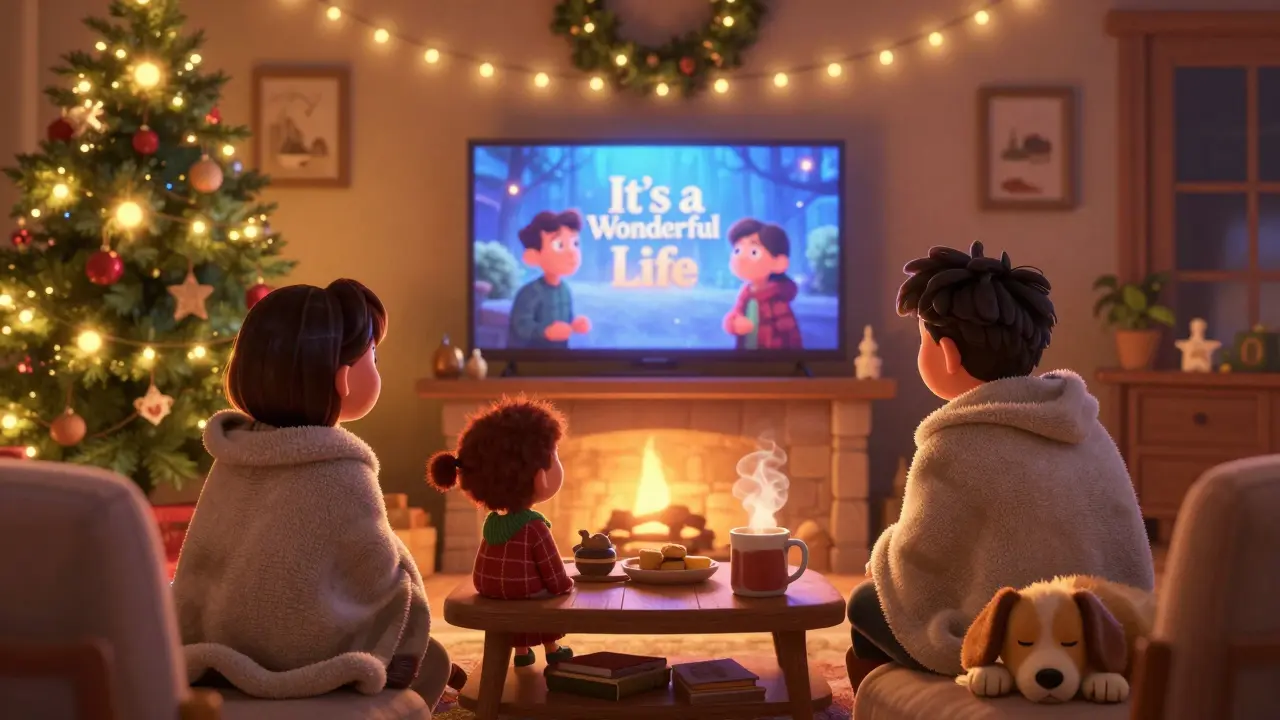You’ve been there. It’s 9 p.m. You’re tired. Your brain is fried from work. You open up your streaming app, scroll for ten minutes, and still can’t decide what to watch. You’re not lazy. You’re just not in the mood for anything heavy, funny, or dramatic-yet you know you need something to sink into. That’s where genre-based organization on streaming platforms comes in. It’s not just about sorting movies by action or romance. It’s about matching your emotional state to the right story, right now.
Why Genre Matters More Than Ever
Streaming services have over 10,000 titles between them. Netflix alone has more than 1,500 original series and films. With that much content, browsing by alphabetical order or release date is useless. You don’t want to see every movie ever made-you want the one that fits how you feel today.
That’s why platforms have moved beyond simple categories. They now group content by emotional tone, not just plot type. Think of it like a mood ring for your screen. Need comfort? Try ‘Feel-Good Comedies’ on Hulu. Feeling anxious? ‘Slow-Burn Thrillers’ on Max might help you focus. Want to cry? ‘Tearjerker Dramas’ on Apple TV+ is a curated list, not just a search result.
These aren’t random tags. They’re built using real viewer behavior. Netflix tracks what people watch after they finish a sad movie. Disney+ notices that people who watch ‘The Mandalorian’ often return to ‘The Owl House’. These patterns become genre clusters-micro-categories that feel personal.
How Each Service Structures Mood-Based Genres
Not all streaming services organize content the same way. Each has its own logic, shaped by its audience and library.
Netflix uses a system called ‘taste profiles’. It doesn’t just label a movie as ‘romantic comedy’. It breaks it down into emotional components: ‘Hopeful’, ‘Whimsical’, ‘Nostalgic’, ‘Heartfelt’. You’ll find lists like ‘Movies That Make You Smile After a Long Day’ or ‘Shows That Feel Like a Hug’. These aren’t just marketing. They’re algorithmically generated from millions of viewing sessions.
Disney+ leans into family moods. Instead of ‘Action’, you’ll see ‘Adventure for Kids Who Love Heroes’. Instead of ‘Horror’, it’s ‘Spooky but Not Scary’. The platform understands that a parent doesn’t want to watch ‘The Conjuring’ with their 8-year-old-but they might want ‘Monsters, Inc.’. So it creates genre buckets based on emotional safety, not just content rating.
Max (formerly HBO Max) is all about intensity. Its ‘Dark & Moody’ section includes everything from ‘Succession’ to ‘The Last of Us’. The ‘Whimsical & Quirky’ category features ‘Barry’ and ‘Ted Lasso’. Max doesn’t just say ‘comedy’-it tells you whether the comedy is cynical, absurd, or warm.
Hulu is the most experimental. It has a section called ‘Just Binge’ that’s built for low-effort viewing. You’ll find ‘Shows You Can Watch With One Eye Closed’ and ‘Comfort Food TV’. These aren’t official genres-they’re community-driven labels that Hulu adopted because users kept searching for them.
Apple TV+ is quiet but precise. Its ‘Emotional Journeys’ section includes films like ‘CODA’ and ‘The Tragedy of Macbeth’. These aren’t listed under ‘Drama’-they’re grouped by emotional arc: ‘Grief and Healing’, ‘Quiet Triumph’, ‘Subtle Transformation’.
What the Data Tells Us About What People Really Watch
Behind these genre buckets is real data. A 2024 study by the Streaming Analytics Group found that 68% of viewers choose content based on how they feel, not what’s trending. People who watched ‘The Bear’ on Hulu were three times more likely to watch ‘Ted Lasso’ than any other comedy. Why? Because both shows deal with grief, but in different tones.
Another pattern: ‘Comfort Viewing’ spikes on Sunday nights and after rainy days. ‘Calm & Quiet’ genres on Apple TV+ saw a 42% increase in viewership during winter months. ‘High-Energy Action’ titles drop off after 8 p.m., while ‘Slow Mystery’ shows peak between 10 p.m. and midnight.
These aren’t coincidences. Platforms are using this data to build genre libraries that respond to your life, not just your clicks.

How to Find Your Perfect Mood Genre
Here’s how to stop scrolling and start watching:
- Identify your mood. Are you tired? Overstimulated? Lonely? Excited? Write it down. One word is enough.
- Look for genre labels that match. Don’t search for ‘comedy’. Search for ‘light-hearted’ or ‘feel-good’. On Netflix, type ‘feel good’ into the search bar-it pulls up curated lists.
- Use the ‘Because You Watched’ section. After finishing a show, scroll down. If you liked ‘The Queen’s Gambit’, you’ll see ‘Similar Shows About Quiet Triumph’. That’s your genre map.
- Try the ‘Hidden’ genres. On Disney+, go to ‘Browse All’ > ‘Genres’ > scroll all the way to the bottom. You’ll find ‘Animation for Adults’ and ‘Quiet Sci-Fi’-genres most people never notice.
- Save your favorites. Create a list called ‘Mood Matches’ and add titles that fit how you feel. Over time, you’ll build your own personal genre library.
The Rise of Micro-Genres
Genres are splitting into smaller pieces. You used to have ‘Romance’. Now you have:
- ‘Enemies to Lovers With a Side of Coffee Shop’
- ‘Slow Burn Love Story Set in Winter’
- ‘Romantic Comedy With a Side of Workplace Drama’
These aren’t jokes. They’re real categories on streaming platforms. A 2025 internal report from Netflix showed that titles tagged with these micro-genres had 27% higher completion rates than broad categories.
Why? Because specificity works. If you’re looking for ‘a love story where the couple doesn’t kiss until episode 5’, you’re not just watching-you’re hunting for a feeling. And platforms are getting better at matching that feeling.

What You’re Not Seeing
Not all genre buckets are visible. Some only appear after you’ve watched a few titles in that style. That’s intentional. Platforms don’t want to overwhelm you. They want to guide you.
For example, if you watch three ‘Quiet Nature Documentaries’, you might unlock a new section called ‘Calm Visual Stories’-which includes films like ‘My Octopus Teacher’ and ‘The Green Planet’. These aren’t labeled as ‘nature’-they’re labeled as ‘meditative’.
It’s like a secret language between you and the algorithm. The more you watch, the more it learns your emotional vocabulary.
How to Break Out of Your Genre Rut
Do you always watch the same type of show? Maybe you only pick thrillers. Or maybe you only watch rom-coms. That’s fine-but you might be missing out.
Try this: Every month, pick one genre you’ve never tried. If you usually watch action, try ‘Gentle Family Dramas’. If you always watch comedies, try ‘Quiet Horror’. You don’t have to love it. Just watch the first 15 minutes. You might discover that you enjoy ‘slow-burn emotional stories’ more than you thought.
Streaming services are designed to keep you in your comfort zone. But sometimes, the best thing you can watch is the one that doesn’t match your mood-because it changes it.
Final Tip: Your Mood Is the Best Search Term
Stop typing ‘action movies 2025’ or ‘best comedies’. Start typing ‘calm’, ‘exciting’, ‘nostalgic’, ‘weirdly comforting’. These words are the real keys to finding what you need.
Platforms don’t care what you want to watch. They care how you want to feel. And when you match your mood to the right genre, you stop scrolling. You start watching. And you actually finish it.
How do streaming services know what mood I’m in?
They don’t read your mind-they track what you watch, when you watch it, and what you watch next. If you finish a sad movie and immediately start a funny one, the system learns you use comedy to lift your mood. Over time, it builds a profile of your emotional patterns and surfaces content that fits.
Are genre categories the same on all platforms?
No. Netflix focuses on emotional tone, Disney+ on family safety, Max on intensity, and Apple TV+ on subtle storytelling. Each platform’s genre system reflects its brand and audience. What’s called ‘Feel-Good’ on Hulu might be labeled ‘Heartwarming’ on Apple TV+.
Can I create my own mood-based lists?
Yes. All major services let you create custom lists. Name them after your moods: ‘When I Need a Laugh’, ‘Quiet Nights’, ‘Something That Feels Like Home’. These lists become your personal genre library and are synced across devices.
Why do I keep seeing the same types of shows?
Algorithms prioritize what you’ve watched before because they assume you’ll like similar content. But that creates a loop. To break it, search for a mood you haven’t tried in months-like ‘nostalgic’ or ‘weirdly uplifting’-and pick something unfamiliar. You might rediscover what you like.
Do genre tags change over time?
Yes. Platforms update their genre buckets based on viewer trends. A category like ‘Post-Apocalyptic Hope’ might appear after several successful shows like ‘The Last of Us’ or ‘Station Eleven’. Genres evolve as culture does.



